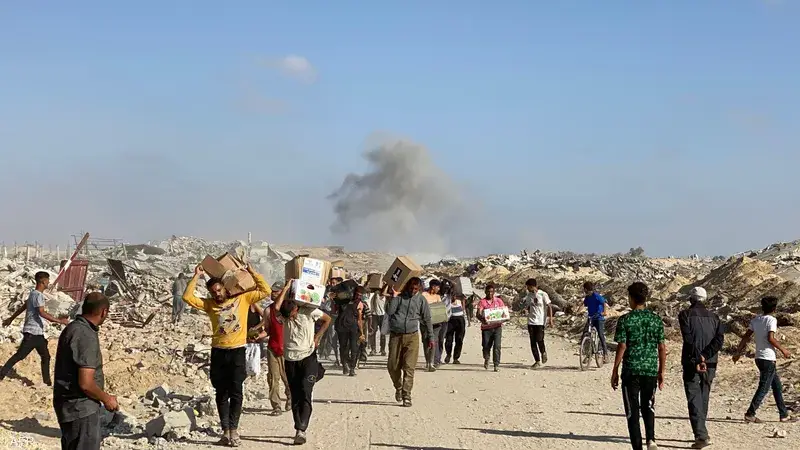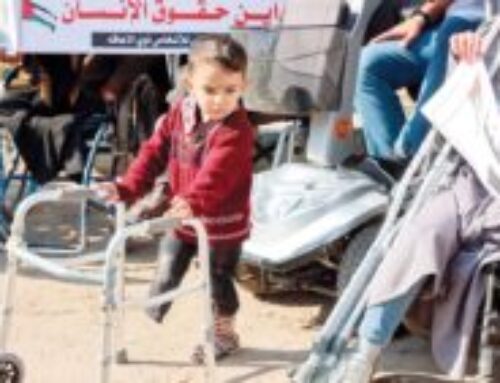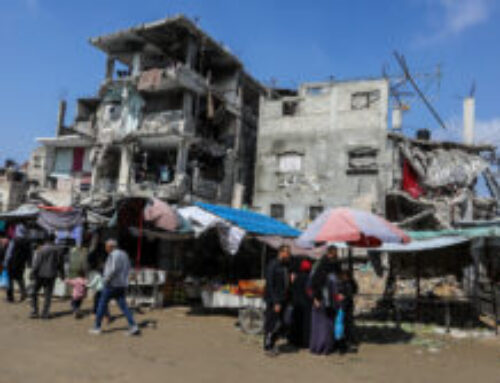In the heart of Khan Younis, where hunger walks ahead of passersby like a heavy shadow, and where people crowd around food distribution centers as if they were lifeboats in a raging sea, the tragedy unfolded.
In a moment everyone hoped would be a glimmer of hope, the square turned into a scene of blood and smoke when tanks opened fire on bodies that carried nothing but hope for a morsel of bread.
They were there, unarmed, carrying their empty bags and hearts weighed down by hunger. They cautiously stepped toward the aid convoys, then the shells rained down upon them. Children, women, and the elderly fell among screams for help and torn pieces of bread.
Amid this cruel scene, the killing machine continues as if it neither sees, nor hears, nor acknowledges any of the international laws.
A Siege that Strangles every Breath
For months, the Gaza Strip has been living under a suffocating siege that tightened its grip on food, water, and medicine, until hunger became a daily face walking through the streets. Tens of thousands of children sleep on pillows made of hunger, while their mothers carry unbearable pain, helpless to feed their small bodies that wither day by day.
Famine is no longer looming on the horizon — it has invaded homes, entered schools and hospitals, settled in the bellies of the young, and cast its shadow over every detail of life. Relief centers, which were supposed to be havens, have become open traps in the open air, targeting those who stand in their queues.
In the details of the massacre that shook consciences today, more than 60 people were martyred and 200 others injured in a direct bombing of civilians who were waiting to receive food aid east of Khan Younis in the southern Gaza Strip.
This bloody scene brings to mind the warnings of the Commissioner-General of the United Nations Relief and Works Agency for Palestine Refugees (UNRWA), Philippe Lazzarini, who said:
“Aid distribution has become a death trap… The siege must be lifted immediately, and the UN must be allowed safe and unrestricted access to prevent famine, especially among children.”
His statement sums up the magnitude of the tragedy that the Gaza Strip lives daily, affirming that the siege here does not only kill by starvation but also kills with bullets and shells — even in queues of survival.
The Chaos of Relief… and Testimonies of Death
Chaos devours everything. Thousands of tons of food remain stuck at border crossings. Supply lines are collapsing. Hospitals are closing their doors one after the other. Water tanks are drying up. Electricity is now but a memory.
Civilians are being bombed while waiting for aid. They rush toward distribution centers carrying a glimmer of hope, only to find themselves suddenly under merciless bombardment. Khan Younis was not the only scene; a similar massacre had occurred earlier in Rafah — as if food has now become a legitimate target.
The aid, which was supposed to be a lifeline, has turned into a deadly trap. Obtaining food has become a bloody gamble that can end at any moment under a hail of bullets.
This is what UN Secretary-General António Guterres described, stressing that “it is unacceptable that Palestinians must risk their lives for food” and calling for an immediate, independent investigation and accountability for those responsible.
His words reflect the scale of the catastrophe, where every attempt to stay alive becomes a gamble that may cost a life.
The suffocating siege and the strict restrictions on aid entry have not only killed people through hunger — they have also killed them while they were trying to survive. It is as if the siege does not want them to live, nor does it allow them to die in peace.
In another painful testimony, UN Human Rights spokesperson in Geneva, Jeremy Laurence, said:
“The repeated attacks near aid distributions are horrific assaults on desperate civilians seeking a small amount of food… A brutality that is beyond belief.”
Voices from the World… and Anger with No Echo
In the face of this catastrophe, voices have been raised demanding the lifting of the siege, calling for the establishment of safe corridors for aid, and condemning the use of hunger as a weapon. Yet, despite their sincerity, these voices seem to be shouting into a deep political void that expands with every falling shell and every child dying of hunger.
The tragedy of Gaza today is not just numbers; it is faces and dreams cut short before they could be realized. It is the responsibility of journalism — and the global conscience — to convey the truth as it is: to convey hunger, fear, and death… and to demand not just sympathy, but real action, before famine consumes what remains of life.





